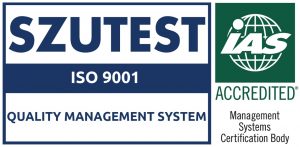IOSH Managing Safely Level 2
- 8k+ Students
- Level 2
- 4.5 Reviews
Managing Safely is designed for managers and supervisors in any sector, and any organization worldwide. it delivers practical step-by-step guidance with a sharp business focus that’s hands-on and jargon-free. IOSH is the Chartered body and largest membership organisation for health and safety professionals. Our vision is simple: a safe and healthy world of work.
- 4.5 (8,959 Ratings)
What you’ll learn
COURSE FEATURES
- Level 2 (UK)
- 8 Topics Covered
- Online Verifiable
- Online/On-Campus
- Lifetime Validity
- Certificate of Completion
- To understand the key reasons to manage safety and health in the workplace.
- The moral, legal and financial implications of poor safety management.
- To identify how the law can have an impact on safety and health in the workplace.
- How to assess, reduce and control risk in the workplace.
- To identify workplace hazards and risks, their impact and how to manage them.
- To identify how to evaluate and respond to an incident.
- The ability to advise and influence health and safety culture in the workplace.
Every year, around 100,000 people gain a qualification from the Institution of Occupational Safety and Health (IOSH), which enables them to effectively promote and manage health and safety in their workplace. Our IOSH training courses focus on best practice, which makes them ideal for people from different industries, countries and job roles.
Managing Safely is unlike any other safety and health course. Why? Because it delivers practical step-by-step guidance with a sharp business focus that’s hands-on and jargon-free. The innovative format and content are engaging and inspiring – critical to embedding safety and health throughout your entire organization.
Who is Managing Safely For
Managing Safely is designed for managers and supervisors in any sector, and any organization worldwide. They won’t suddenly become safety experts – but they’ll get up-to-speed on the practical actions they need to take and gain the knowledge and tools to tackle the safety and health issues they’re responsible for. Importantly, Managing Safely makes a powerful case for safety and health being an integral part of day-to-day management and business.
Entry Requirments
There are no entry requirements for this qualification, however it is important that learners have a suitable standard of English language in order to understand and articulate the concepts contained in the syllabus.
1. Introducing Managing Safely
- Understanding what is meant by “health and safety”
- The moral, legal and financial reasons to manage health and safety
- Managers responsibilities and accountability
2. Investigating Accidents and Incidents
- The difference between accidents and a near miss
- Accident ratios/accident triangles
- Accident causation theories
- The reasons for investigating an accident
- Responding to an accident
- The investigation process
- RIDDOR – reporting of injuries, diseases, and dangerous occurrences regulations
3. Human factors
- Organization factors including safety culture and managers
- Job factors
- Individual factors; attitude, personality, abilities, training and development, motivation, and perception of risk
- Human failure
- Violations
- Errors
4. Assessing Risk
- Sensible risk management
- The risk assessment process
- Specific cases for risk assessment
5. Controlling Risk
- The legal framework for Risk Management
- Hierarchies of control
- Required levels of control
- Safety Systems of Work (SSW) and Permits to Work (PTW)
- Emergency arrangements
6. Understanding Managers Responsibilities
- Health and safety law; civil, criminal and levels of legal duties
- Enforcement of health and safety
- Health and safety management systems; plan, do check, act
7. Common hazards
- Access and Egress
- Aggression, bullying, and violence
- Asbestos
- Chemical and substances
- Confined spaces
- DSE
- Drugs and alcohol
- Electricity
- Fire
- Housekeeping
- Lighting
- Manual handling
- Noise
- Radiation
- Slips, trips, and falls
- Stress
- Vibration
- Welfare facilities
- Work equipment and machinery
- Workplace transport
- Workplace temperature
- Work at height
8. Measuring performance
- Active and reactive monitoring systems
- Health and safety auditing
The learner will be able to:
- Describe the key reasons to manage safety and health in the workplace
- Define the key terms relating to safety and health
- Identify how the law can have an impact on safety and health in the workplace
- Describe how to assess, reduce and control risk in the workplace
- Identify workplace hazards and risks, their impact and how to manage them
- Identify how to evaluate and respond to an incident
- List the benefits and characteristics of an effective health and safety management system
- Describe the principles that underpin good safety and health performance
There is a 45-minute written assessment, consisting of 30 questions in a variety of formats, and a standard project which comprises of a workplace risk assessment. The project must be completed within two weeks of the end of the course.
december, 2024
A Wide Selection Of Courses
Choose From Our Best Online Video Courses With New Additions Published Every Month.






